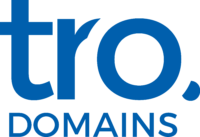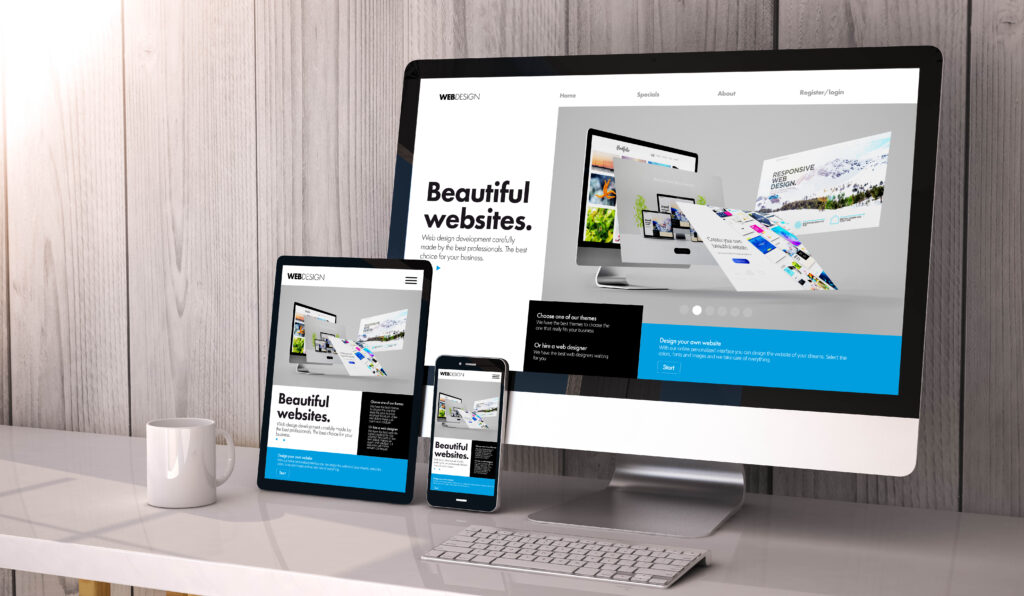Introduction to Website Builders That Are Easy to Use
In the current digital era, an online presence is essential for businesses of all sizes. For many, however, the intricacies of managing a website can be overwhelming, particularly for those who are just starting. Fortunately, easy website maintenance has been made possible through the introduction of user-friendly Website Builders. These tools have revolutionised the way websites are created and maintained, offering a more accessible approach for individuals without extensive technical expertise.
User-friendly Website Builders offer a range of features designed to simplify the process of building and maintaining a website. They provide intuitive interfaces that enable users to create professional-looking websites with minimal effort. The ease of use associated with these builders makes them ideal for beginners and small business owners who may lack the resources or knowledge to develop a website from scratch.
One of the primary attractions of user-friendly Website Builders is their ability to streamline the website creation process. With features like drag-and-drop functionality, users can easily customise their site by positioning elements exactly where they want them. This visual approach eliminates the need for complex coding, making it accessible to those with little to no technical background.
In addition to drag-and-drop capabilities, these builders often come equipped with a variety of pre-designed templates. These templates serve as a foundation for your website, allowing you to quickly establish a professional online presence. Users can choose from a wide selection of designs that align with their brand’s aesthetic, further simplifying the process of creating a cohesive and attractive site.
The flexibility offered by user-friendly website builders extends beyond initial setup. Maintaining and updating the website is equally straightforward. These builders provide tools that make it easy to add new content, update existing pages, and implement new features without hassle. This ensures that your website remains dynamic and relevant, keeping visitors engaged.
Moreover, many Website Builders come with built-in tools and plugins that enhance the functionality of your site. Whether you need to add an e-commerce store, integrate social media feeds, or include a blog, these tools are readily available and can be incorporated with just a few clicks. This level of customisation allows businesses to tailor their websites to meet specific needs and goals, all while avoiding the complexity typically associated with such enhancements.
Another significant benefit is the time efficiency that comes with using these builders. The simplified interface and user-friendly features mean that creating and maintaining a website requires less time and effort. For small business owners and entrepreneurs, this translates to more time available for focusing on core business activities rather than being bogged down by technical challenges.
Furthermore, the support provided by these platforms is invaluable for beginners. Many user-friendly Website Builders offer extensive resources, including tutorials, FAQs, and customer support, to assist users throughout the website creation and maintenance process. This ensures that even those with minimal experience can confidently manage their online presence.
In summary, user-friendly website builders have made it easier than ever to establish and maintain a professional online presence. With intuitive interfaces, pre-designed templates, and a host of built-in tools, these builders provide a simplified approach to website management. This accessibility is particularly beneficial for beginners and small business owners, enabling them to create and maintain engaging websites without the need for extensive technical knowledge.
Characteristics of a User-Friendly Builder
A standout trait of a user-friendly Website Builder is its intuitive design. Central to this is the drag-and-drop functionality, allowing users to place elements on their site simply by dragging them into position. This approach negates the need for complicated coding or technical skills, making the platform accessible to a broad audience.
Pre-designed templates are another significant feature. These templates provide a ready-made foundation for your website, facilitating quick and efficient setup. With an extensive array of styles and formats, users can effortlessly find a template that complements their brand’s aesthetic. This not only speeds up the creation process but also ensures a professional-looking result.
Many user-friendly Website Builders also offer extensive app stores. For example, Wix provides access to over 500 apps, allowing users to enhance their sites with various functionalities. This enables customisation without the need for technical expertise. Such additions can range from SEO tools and contact forms to e-commerce solutions and social media integrations, empowering users to tailor their websites to specific requirements.
In addition to these features, user-friendly builders typically offer comprehensive customer support. This support often includes tutorials, FAQs, and dedicated help desks, ensuring users can find assistance whenever needed. This is especially beneficial for beginners who might encounter issues or have questions during the website creation and maintenance process.
Another important characteristic is the responsive design options provided by these builders. In today’s mobile-centric world, ensuring your website looks great on all devices is essential. A user-friendly builder will offer templates and tools that automatically adjust your site’s layout to suit different screen sizes, enhancing the user experience across desktops, tablets, and smartphones.
User-friendly builders also tend to include integrated analytics tools. These tools enable users to monitor their website’s performance, track visitor behaviour, and gain insights into which aspects of their site are most effective. This data is invaluable for making informed decisions about content and design adjustments, ultimately helping to improve engagement and conversion rates.
The ability to integrate third-party services is another key feature. User-friendly builders often allow seamless integration with various external services, such as email marketing platforms, CRM systems, and payment gateways. This interoperability ensures that your website can grow and adapt alongside your business, offering the functionality needed to support your goals.
Additionally, these builders often come equipped with built-in SEO tools. Effective search engine optimisation is crucial for increasing visibility and driving traffic to your site. With tools designed to help optimise your content, meta descriptions, and keywords, user-friendly builders make it easier for your website to rank higher in search engine results, boosting your online presence.
Lastly, user-friendly builders usually offer robust security features. These include SSL certificates to ensure secure connections, regular updates to protect against vulnerabilities, and data backup options to safeguard your content. Such measures provide peace of mind, knowing that your website is well-protected against potential threats.
In summary, the characteristics that define a user-friendly Website Builder—intuitive design, pre-designed templates, extensive app stores, responsive design, integrated analytics, third-party service integration, built-in SEO tools, and robust security features—combine to create a platform that is both accessible and powerful. Whether you are a beginner or a small business owner, these builders offer the tools necessary to create, maintain, and optimise a professional and engaging website.
Advantages of Simplified Website Maintenance
A major advantage of using a simplified Website Builder is the ease with which updates and changes can be managed. The straightforward nature of these tools allows business owners to swiftly make necessary adjustments, ensuring their online presence remains current and appealing. This is particularly advantageous for small enterprises and entrepreneurs who may not have the luxury of dedicated IT personnel.
With simplified website maintenance, the reliance on technical support is greatly diminished. Intuitive builders empower users to address minor issues on their own, without the need for specialised help. This independence not only conserves time but also reduces expenses associated with professional technical assistance.
The efficiency gained through a simplified maintenance process translates to significant cost savings. Business owners can avoid the ongoing expense of hiring web developers or IT consultants for routine updates and minor modifications. Instead, they can allocate these resources towards other critical areas of their business, fostering growth and innovation.
Additionally, the user-friendly nature of these builders means that non-technical staff can easily participate in the website management process. This inclusivity allows for a more collaborative approach, where team members from various departments can contribute to the website’s upkeep. Marketing teams can quickly update promotional content, product managers can add new listings, and customer service representatives can ensure that FAQs and support information are current.
The ability to make rapid changes to the website is also beneficial in responding to market trends and customer feedback. Businesses can swiftly implement changes based on analytics and user behaviour, allowing them to stay competitive and meet customer expectations. Whether it’s launching a new product, updating pricing information, or highlighting a special offer, these adjustments can be made efficiently and effectively.
Furthermore, the streamlined maintenance process enhances the overall user experience. By ensuring that the website remains up-to-date and functional, businesses can provide a reliable and engaging platform for their visitors. This reliability fosters trust and encourages repeat visits, contributing to higher customer satisfaction and loyalty.
In terms of content management, simplified website builders offer tools that make it easy to keep information fresh and relevant. Regularly updating blog posts, news articles, and other content keeps the website dynamic and engaging, drawing in new visitors and retaining existing ones. The intuitive interfaces of these builders make content updates straightforward, enabling businesses to maintain an active and vibrant online presence.
The flexibility of simplified website builders also supports the integration of new features and functionalities. As business needs evolve, these builders allow for seamless incorporation of additional tools, such as e-commerce capabilities, booking systems, or interactive elements. This adaptability ensures that the website can grow alongside the business, providing the necessary functionality to support its objectives.
Lastly, many simplified website builders include built-in analytics and monitoring tools. These features enable businesses to track performance metrics and user behaviour, providing valuable insights into how the website is being used. By leveraging this data, businesses can make informed decisions about further updates and enhancements, optimising their online presence for better results.
Ensuring Content Stays Fresh and Engaging
In the fast-paced digital landscape, keeping your website content up-to-date and engaging is crucial for maintaining visitor interest and ensuring repeat visits. A user-friendly Website Builder facilitates this by offering a range of tools that simplify content updates and modifications.
One of the most significant benefits of these builders is the ease with which you can update text and images. With intuitive interfaces, changing headlines, editing product descriptions, or swapping out images can be done quickly and efficiently. This allows businesses to react promptly to market trends, seasonal changes, or new product launches, ensuring that their website always reflects the latest developments.
In addition to text and images, multimedia elements such as videos and slideshows can be incorporated with minimal effort. User-friendly Website Builders often provide straightforward methods for embedding video content, which can significantly enhance the appeal of your site. Whether it’s a product demonstration, a customer testimonial, or an informational video, these multimedia elements can engage visitors more effectively than text alone.
Another key feature that contributes to fresh and engaging content is the ability to integrate interactive elements. Features such as customer reviews, comment sections, and live chat functions can be easily added, creating a more dynamic and interactive experience for visitors. These elements not only make the website more engaging but also provide valuable feedback and interaction opportunities with your audience.
Regularly updating blog posts and news articles is another effective strategy for keeping content fresh. User-friendly Website Builders offer tools that make it simple to add new posts, schedule updates, and manage archives. By consistently providing new and relevant information, businesses can position themselves as thought leaders in their industry and keep visitors returning for the latest insights.
Additionally, incorporating social media feeds can significantly enhance the dynamism of your website. Many website builders offer easy integration with platforms like Facebook, Twitter, and Instagram, allowing your social media activity to be displayed directly on your site. This not only keeps your content current but also encourages visitors to engage with your social media channels, creating a cohesive online presence.
Customisation options within these builders enable businesses to tailor their content to specific audience segments. By using tools to personalise the user experience, such as targeted banners or personalised product recommendations, businesses can create a more engaging and relevant experience for their visitors. This level of personalisation can significantly boost user satisfaction and increase the likelihood of conversions.
User-friendly Website Builders also support the integration of new features and functionalities, which can enhance user engagement. For instance, adding a newsletter signup form can help capture visitor information and foster ongoing communication. Similarly, implementing e-commerce features, such as a shopping cart or payment gateway, can streamline the purchasing process and encourage sales.
SEO tools available within these builders further support content freshness by helping optimise new and existing content for search engines. By ensuring that your content is keyword-rich and well-structured, you can improve your website’s visibility in search engine results, driving more traffic to your site. These tools often provide real-time suggestions and insights, making it easier to create content that performs well.
The ability to perform A/B testing is another valuable feature offered by many user-friendly Website Builders. This functionality allows businesses to test different versions of content to determine which resonates best with their audience. By analysing the results, businesses can make data-driven decisions to enhance content effectiveness and engagement.
Overall, a user-friendly website builder equips businesses with the necessary tools to keep their content dynamic and engaging.
Enhancing the User Experience
Ensuring a seamless user experience is vital for the effectiveness of any website. A beginner-friendly Website Builder provides a range of tools that significantly contribute to creating a positive and engaging user experience. One of the key features is responsive design, which ensures your website adapts to various screen sizes, from desktops to smartphones. This is particularly important as mobile browsing continues to dominate, making it essential for your site to perform well across all devices.
A well-structured website with intuitive navigation is another crucial aspect of enhancing user experience. User-friendly builders offer numerous layout and menu options that help organise your content logically, allowing visitors to find the information they need effortlessly. This not only increases engagement but also boosts conversion rates as users are more likely to take desired actions when they can navigate your site with ease.
Interactive elements such as contact forms, live chat, and customer reviews can also enhance the user experience. These features provide visitors with multiple ways to interact with your site, increasing engagement and offering valuable insights into user behaviour. For instance, live chat functionality allows users to get immediate answers to their questions, improving their overall experience and potentially increasing conversions.
Incorporating multimedia elements like videos and slideshows can make your site more engaging. User-friendly Website Builders simplify the process of adding and managing these elements, allowing you to enrich your content without requiring technical expertise. Videos can be particularly effective in demonstrating products, sharing customer testimonials, or providing informational content, all of which can capture visitors’ attention and keep them engaged longer.
Personalisation options are another powerful tool for enhancing user experience. By tailoring content to individual user preferences, you can create a more relevant and engaging experience. User-friendly builders often include features that allow for personalised recommendations, targeted banners, and customised user journeys. This level of personalisation can significantly improve user satisfaction and encourage repeat visits.
SEO tools integrated within the website builder also play a role in enhancing user experience. By optimising your content for search engines, you can increase your site’s visibility, attracting more visitors. Higher visibility in search engine results not only drives traffic but also lends credibility to your site, making users more likely to trust and engage with your content.
Loading speed is another critical factor in user experience. Slow-loading pages can frustrate users and lead to higher bounce rates. Many user-friendly builders include performance optimisation tools that help improve your site’s loading times. Faster loading speeds enhance the browsing experience and can positively impact your search engine rankings.
Integrated analytics tools provide valuable insights into user behaviour, allowing you to make data-driven decisions to further improve user experience. By analysing metrics such as page views, bounce rates, and user paths, you can identify areas for improvement and adjust your content and design accordingly. This ongoing optimisation ensures your site remains user-friendly and engaging.
Lastly, the inclusion of social media integration allows visitors to connect with your brand across multiple platforms, creating a cohesive and interactive online presence. This not only keeps your content fresh and relevant but also encourages users to engage with your social media channels, fostering a deeper connection with your audience.
Security Measures and Performance Enhancements
Ensuring the security of your website is critical in today’s digital landscape. A high-quality Website Builder will incorporate advanced security measures to protect your site from potential threats. Features such as SSL certificates are standard, providing encrypted connections that safeguard sensitive information. Additionally, many builders offer regular updates to keep your website protected against the latest vulnerabilities and cyber threats.
Performance is equally important, and optimised loading speeds are crucial for retaining visitors. Slow-loading websites can lead to higher bounce rates, negatively impacting user experience and search engine rankings. To address this, many website builders come with built-in performance enhancement tools. These tools help to streamline your site’s code, compress images, and utilise caching to reduce loading times. By ensuring that your website loads quickly and efficiently, you can provide a smooth and enjoyable browsing experience for your visitors.
Many user-friendly builders also offer monitoring tools to keep an eye on your website’s performance. These tools can alert you to any issues, such as downtime or slow loading speeds, allowing you to take prompt action to rectify the situation. This proactive approach helps to maintain a consistently high level of performance, keeping your visitors engaged and satisfied.
The use of content delivery networks (CDNs) is another common feature offered by top-tier website builders. CDNs distribute your website’s content across multiple servers worldwide, reducing latency and ensuring faster access for users regardless of their geographic location. This global approach to content delivery enhances the overall performance and reliability of your website.
Security and performance are further bolstered by automatic backups, which many builders provide as part of their service. Regular backups ensure that you can quickly restore your website to a previous state in the event of data loss or corruption, minimising downtime and potential disruptions.
Lastly, some website builders offer DDoS protection to defend against malicious attacks that could overwhelm your website’s servers. This added layer of security helps to maintain your website’s availability and reliability, ensuring that it remains accessible to your visitors at all times.
Overall, the integration of robust security measures and performance optimisation tools within user-friendly Website Builders ensures that your website remains secure, fast, and reliable, providing an excellent experience for your users.



